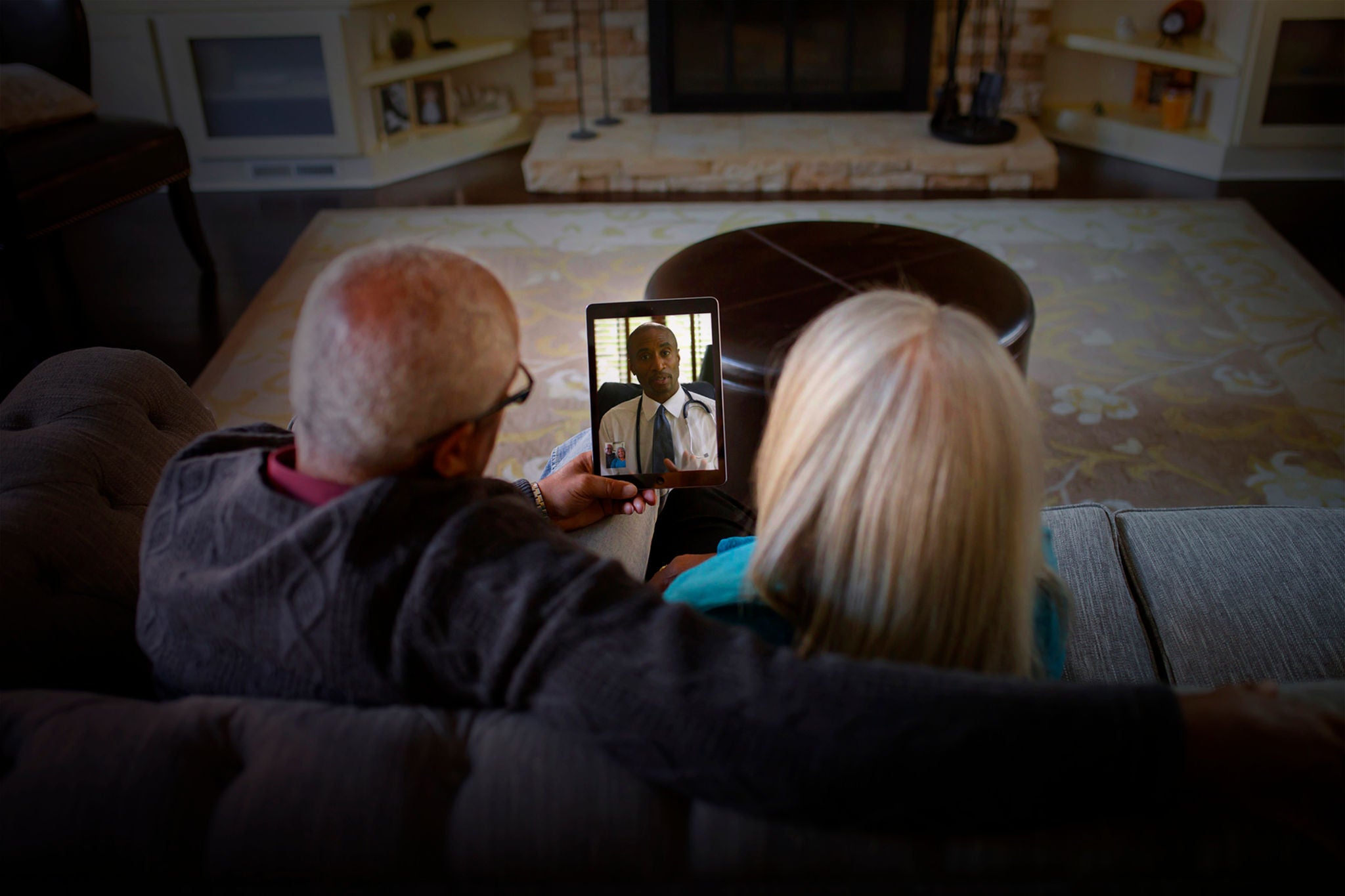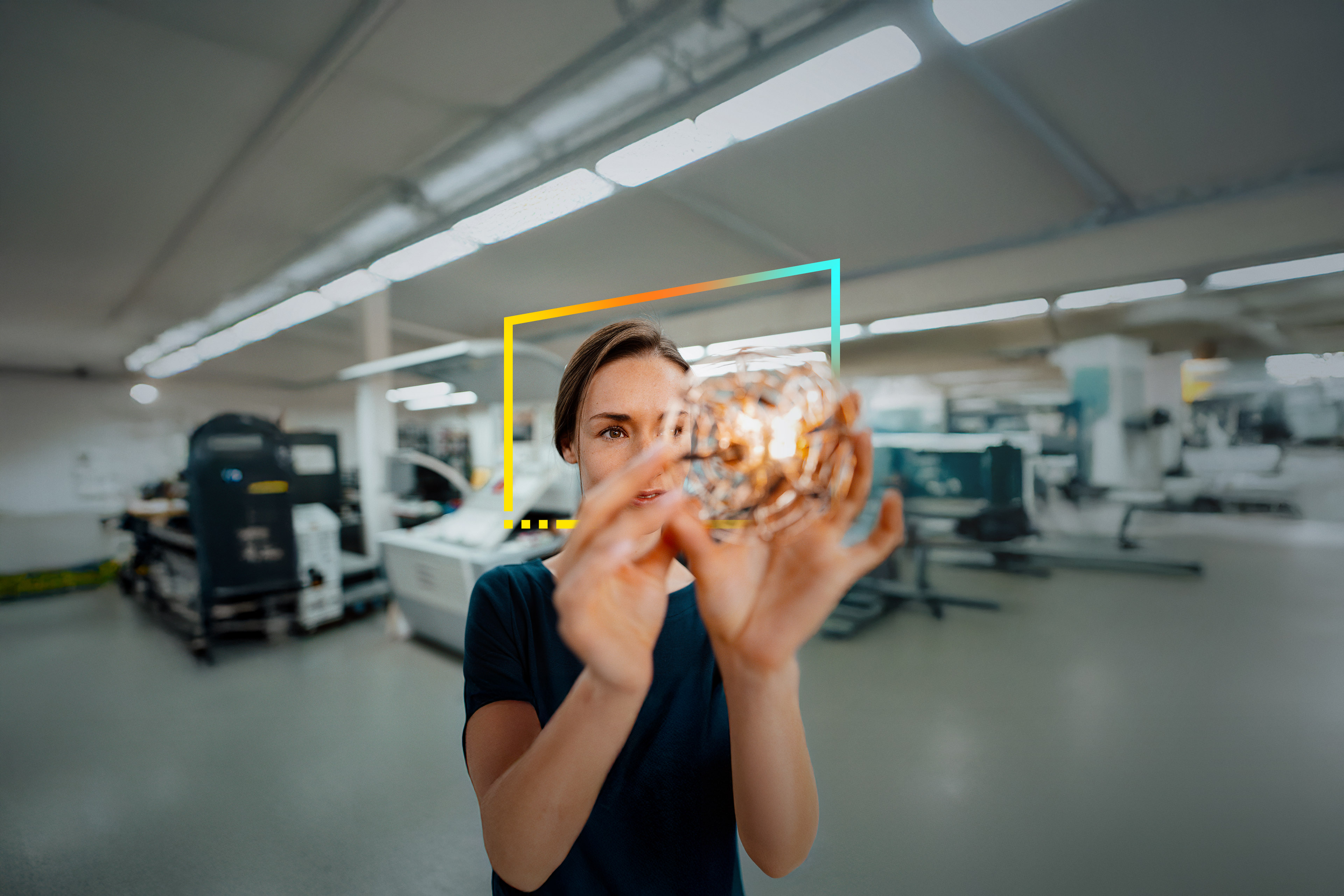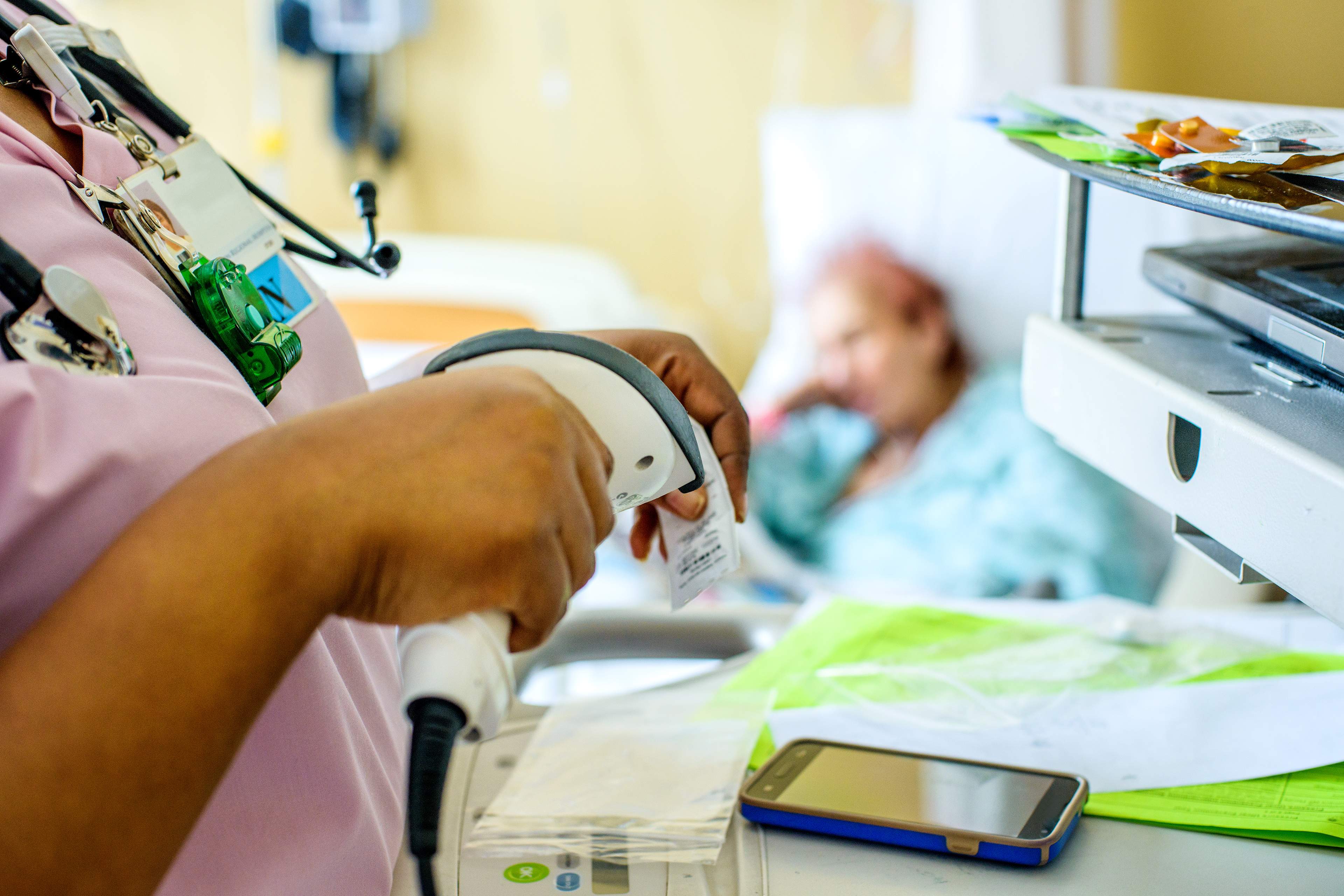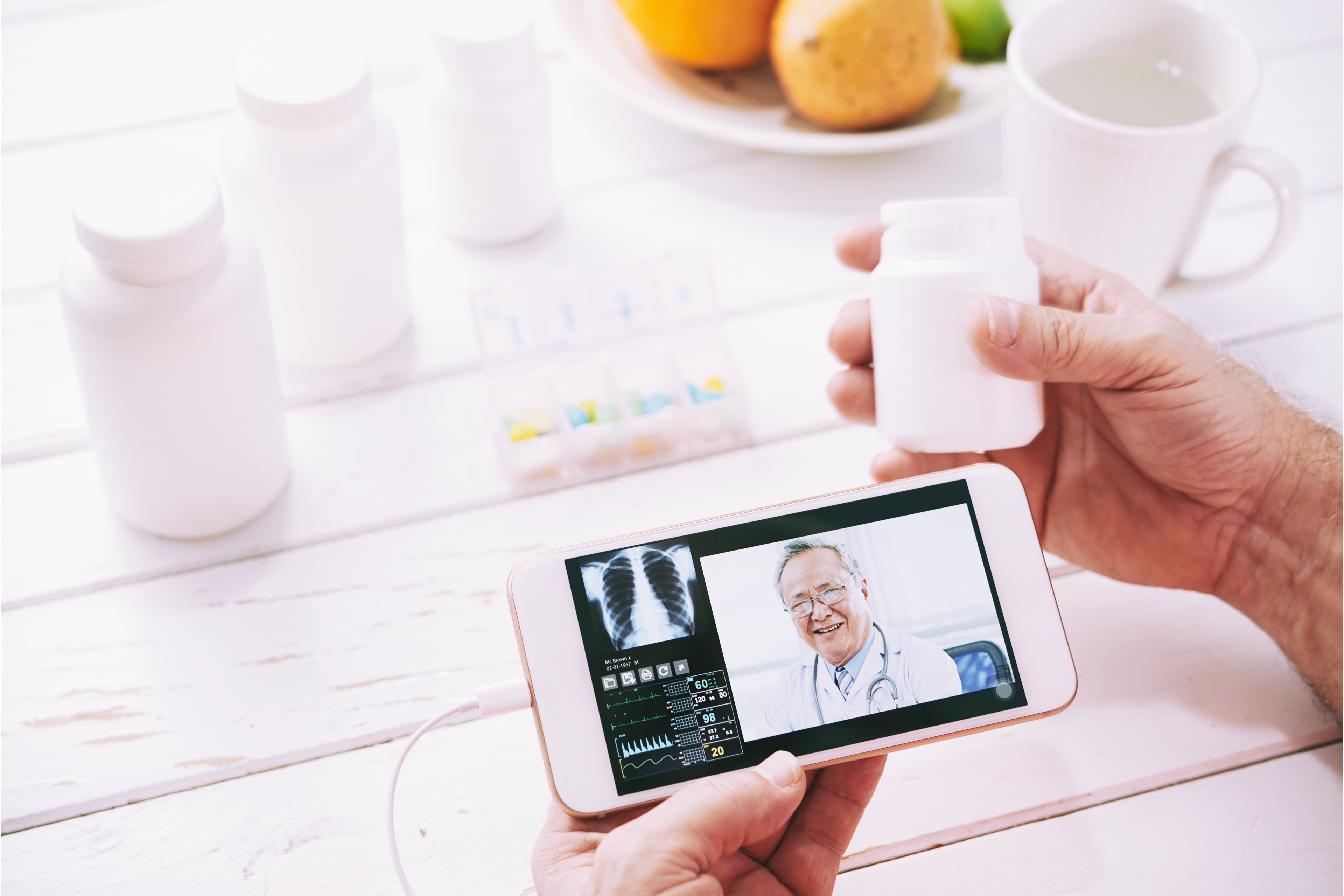EY refers to the global organization, and may refer to one or more, of the member firms of Ernst & Young Global Limited, each of which is a separate legal entity. Ernst & Young Global Limited, a UK company limited by guarantee, does not provide services to clients.

Interconnecting people, the environment, and systems is where health becomes smart. Highly interdependent, one can’t live without the other.
Three questions to ask
- Is your health system’s operating model intelligent enough to respond to today’s customer and clinician needs, let alone those of tomorrow?
- How agile is your current health technology infrastructure and will it be relevant 5 to 7 years from now?
- How are information standards and specifications defined and governed at the health sector level and integrated at the organizational level to facilitate the evolution toward a more connected health ecosystem?
Technology-enabled innovation is accelerating the care models of tomorrow, many of which can only be imagined today. Technologies that enable, automate and engage consumers differently make possible a suite of new health solutions around well-being, remote care, smart homes and communities. Health care becomes about bringing care to the patient, rather than the patient to care, and this applies whether the person is at home, in the hospital, or anywhere in between.
But just changing information into a digital form falls far short of achieving the end goal of seamless and connected care. To move into the future, health systems and hospitals will need to become smart — highly technologically advanced and interconnected. Algorithms, through machine learning and artificial intelligence (AI), will create insight from aggregated user-generated and clinical data; robotics will reduce errors and improve reliability; and systems will be hyper-connected.
A new smart infrastructure will ultimately create a symbiotic relationship between the virtual and the physical (Figure 1). It is against this background that hospitals and health systems are looking to redefine themselves.
So, what does smart health look like? “As technology becomes smarter is your hospital keeping up?” discusses this and more.
Download the article pdf
Unbelievably smart
When highly advanced technologies make possible the care models of tomorrow that are barely imaginable today, the result is smarter health care. To reach this state will require harnessing technologies for:
Smart health ecosystem transformation
To bridge the information and communication gap between different stakeholders and care settings. This includes bringing together the right partners, defining collective and individual relative value and adopting partnering principles to support seamless integration, data flow, and scalability. This will result in better continuity of care, better care outcomes, and reduce overall system cost through minimizing duplication and waste. Overall, this will accelerate the shift from sick care to preventative and wellness-oriented care.
Smart hospital transformation
To deliver efficient and effective operations within the hospital setting, and to extend care beyond the hospital to connect and coordinate hospital-at-home care and well-being. This includes embracing automation, removing non-value-added activities, and adopting an evidence-based, data-driven analytical mindset for strategic planning and operational decision making.
Smart experience
To transform and modernize the end-to-end consumer and workforce experiences. By building trust, demonstrating empathy and understanding patients’ and employees’ preferences, values, behaviors and needs, health institutions will realize stronger engagement and higher stakeholder satisfaction, as well as ultimately better health outcomes.1,2
As we build a combination of physical and virtual spaces, everyone and everything is connected. Embedded sensors in objects connect buildings and spaces, allowing control of the physical environments and easy location of equipment, materials and personnel. Connected systems collect, process, and distribute data. This allows for real-time intelligent decision making about people, the physical environments, and systems. In addition, user experiences are enhanced by seamlessly integrating information sources and having them available across many devices.
A digital backbone will underpin the smart health care system. This is a system-level infrastructure architecture that serves a three-part purpose: safe clinical care, appropriate automation of clinical and back‑office operations, and the delivery of personalized care and prevention. Core information systems, such as EHRs, imaging and laboratory systems, all form part of the broader data ecosystem.
Building blocks of the digital backbone
- Accessibility: to deliver the right care at the right time to the right person
- Integration: where data are discoverable, liquid and able to be acted on, allowing for participatory, preventative and personalized care
- Intelligent: where AI and analytics turn complex information into usable insights and new solutions
- Scalability: able to extend across an entire population seamlessly
Redesigning the way that services are delivered will transform how care is organized and experienced. Better alignment with consumers’ expectations and preferences brings a clear recognition that consumer and clinician experiences matter.
Four key features of smart health systems
1. Anytime, anywhere care through a decentralized interconnected system
Health care will become further decentralized, as virtual care consolidates as a core service delivery platform in a digital-first delivery model. Taking advantage of the full scope of digital technologies to scale across health systems allows for new and alternative models built around very different ways of accessing care.
2. Consumer and clinician experience
Smart hospitals place consumer experience (before entering the hospital, during their stay, and after they leave) at the heart of their model design (Figure 2). In a smart hospital, the patient journey is reimagined as a digital-first experience. Through technology and automated features, patients are digitally engaged at every major step of their health care journey. Starting with a digital front door, the consumer experiences highly personalized information and guidance and is directed to the optimal care setting.
The workforce experience is modernized through AI-optimized workflows, remote collaborations and training, and seamless data sharing in real time between locations and with other members of the care team. Prediction of health care outcomes of interest at the individual patient level enables providers to intervene earlier, with curative or preventative interventions. Population health management and real-time data supporting operational decision-making at all levels become possible through AI-supported analytics. At the enterprise level, the organization itself, as well as the work culture, are transformed by the use of data and informatics that have not been previously available.
3. Highly technologically advanced and always connected
In a smart health system, technology intelligently facilitates the continuous improvement of processes, enhancing the patient journey, quality of care and overall efficiency. They are highly data-driven — data moves across the system, eliminating information silos and supporting the integration and alignment of care (physical, remote and virtual).9 Permissioned data sharing among all ecosystem partners enables a high-quality, efficient, convenient and precise health care delivery.10
4. Sustainability
Future proofing smart hospitals and wider health systems means a whole lifecycle approach to the design and operations of facilities and services. Designing flexible and adaptable structures ensures that they remain fit for purpose over the long-term and not only reduces the need for constant upgrades but delays obsolescence. Energy use, lifecycle duration, pollution controls, and reducing carbon footprints all shape the architectural and technical design briefs for smart health facilities.
Moving to a hybrid care environment
Virtual health alone can’t address the current challenges and drivers of health. It is the union between the physical and virtual worlds that will make a difference.
Becoming smart means integrating into the wider ecosystem and creating a virtual care platform that integrates data through interoperable patient record systems and digital enablers such as IoT, 5G, AI, and remote monitoring. To sustain and capture value faster in this new model, the organizational culture of health systems will need to transition toward a more agile and responsive model. For some health systems, this transition will be a complete organizational transformation. For others, this will be incremental, targeting efficiency and patient experience improvement through digital enablers.
It is abundantly clear that the future of health is smart and that advances in smart technology, smart algorithms and smarter care models will shape the way care is delivered and experienced. This new frontier will allow us to deliver the right insights, to the right people, at the right time, leading to smarter, better informed and more cost-effective care for providers and patients.
Contributors: Emily Mailes, Director, Health Consulting, Ernst & Young - New Zealand; Sheryl Coughlin, PhD, EY Global Health Sciences & Wellness Senior Analyst; Ankur Sadhwani, EY Global Health Analyst.
Summary
Interconnecting people, the environment, and infrastructure as a unified, intelligent, data-optimized system of care is the point where health becomes smart. This opens a realm of possibilities, as health heads into the space where the virtual and the physical worlds converge.
Moreover, as integrated care platforms incorporate social determinant, sensor and wearable data, along with your health information into algorithms, a personalized, smart care experience is possible.
Related articles
How you know a hospital is smart
Hyper-connected, intelligent and human-centered, a smart hospital is future proofed for decades to come.
As technology becomes smarter, is your hospital keeping up?
In a smart hospital, people, their environment and systems are connected in real time and the data generated is used in intelligent ways.
How EY can help
-
Our Smart Health solutions can help your business become a smart health organization. Learn more.
Read more




